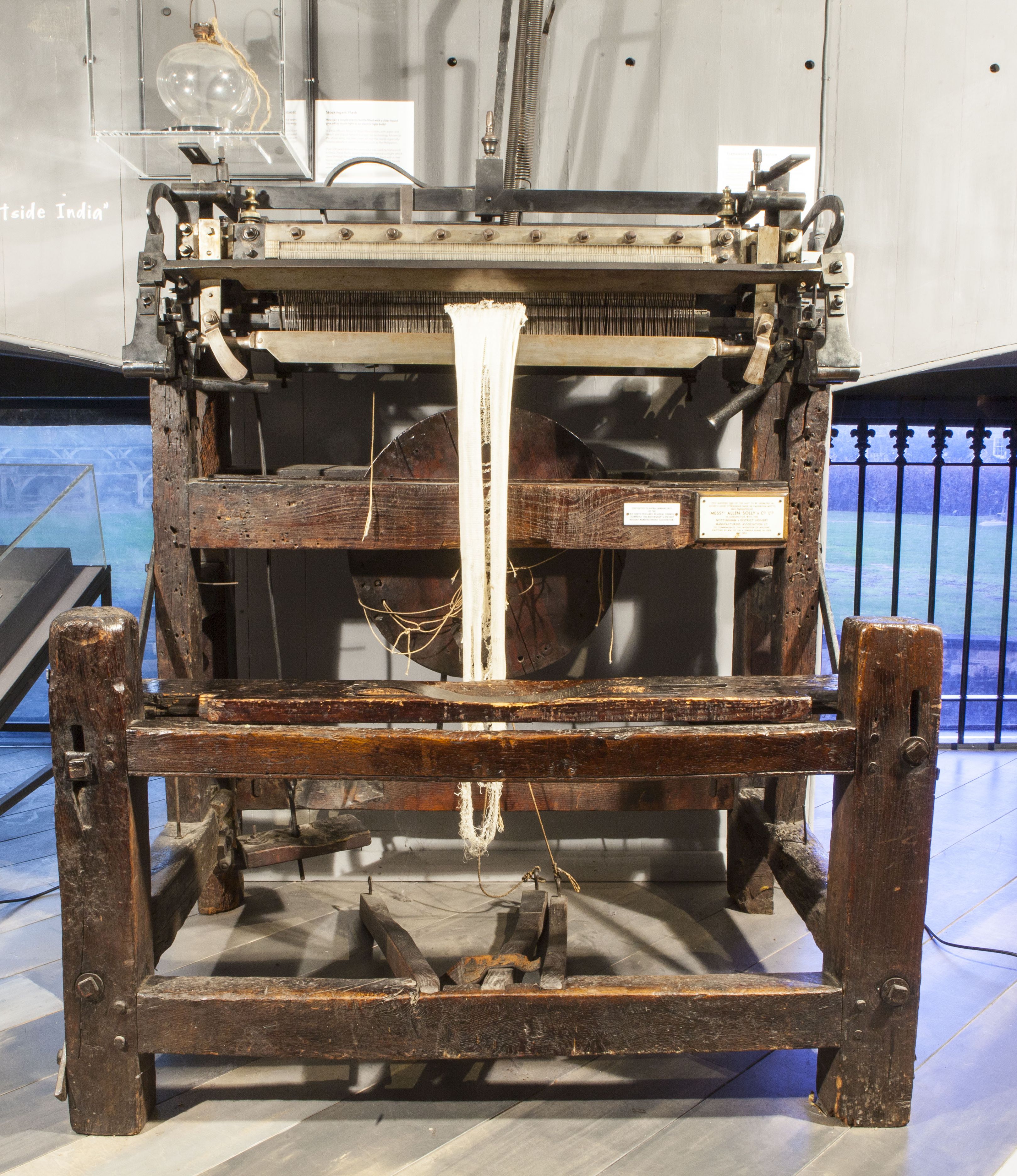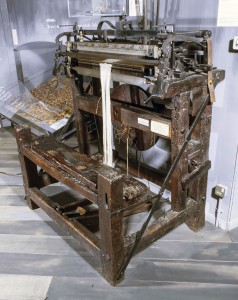
February 9, 2016, by Guest blogger
Emotive Objects at Nottingham Castle: Part 4
Richard Gaunt’s busy few months at Nottingham Castle working as ‘Curator of Rebellion’ has come to an end. He has continued to help shape the historical content informing the new galleries by researching some of the emotive objects which it is hoped will prove particularly appealing to visitors. This is the final instalment in a series of blogs where Richard has shared the results of that research, which show the diverse nature of ‘rebellion’ in the history of Nottingham – and its Castle – over the course of the past 500 years and more. He ends the series with a reminder of one of Nottingham’s most famous rebellious episodes – the machine breakers, or ‘Luddites,’ who operated during the Regency period (1811-20).
A Framework Machine
This machine was one of the last to be operated in Dovey’s Cock Stockinger shop in Calverton, Nottinghamshire. It was presented by Messrs Allen, Solly & Company to commemorate the invention of machine knitting on a similar frame by Reverend William Lee of Calverton in 1589.
Knitting machines or stocking frames were the principal method of producing woollen stockings and the domestic system (where workers or stockingers were supplied with a loom and raw material to work from home) dominated production.
Additions to the machine and new types of machine were introduced throughout the eighteenth century and the English trade came under competition from French developments. During the wars with Revolutionary and Napoleonic France (1793-1815), John Heathcoat’s bobbin net lace machine began to dominate production.
The Luddites pioneered bobbin net production against inferior goods (‘cut-ups’) and foreign single press point net. During the Luddite disturbances after March 1811, some 1000 stocking frames and 80 lace machines were destroyed in protests against the production of cheap, inferior and foreign manufactures.
No comments yet, fill out a comment to be the first

Leave a Reply